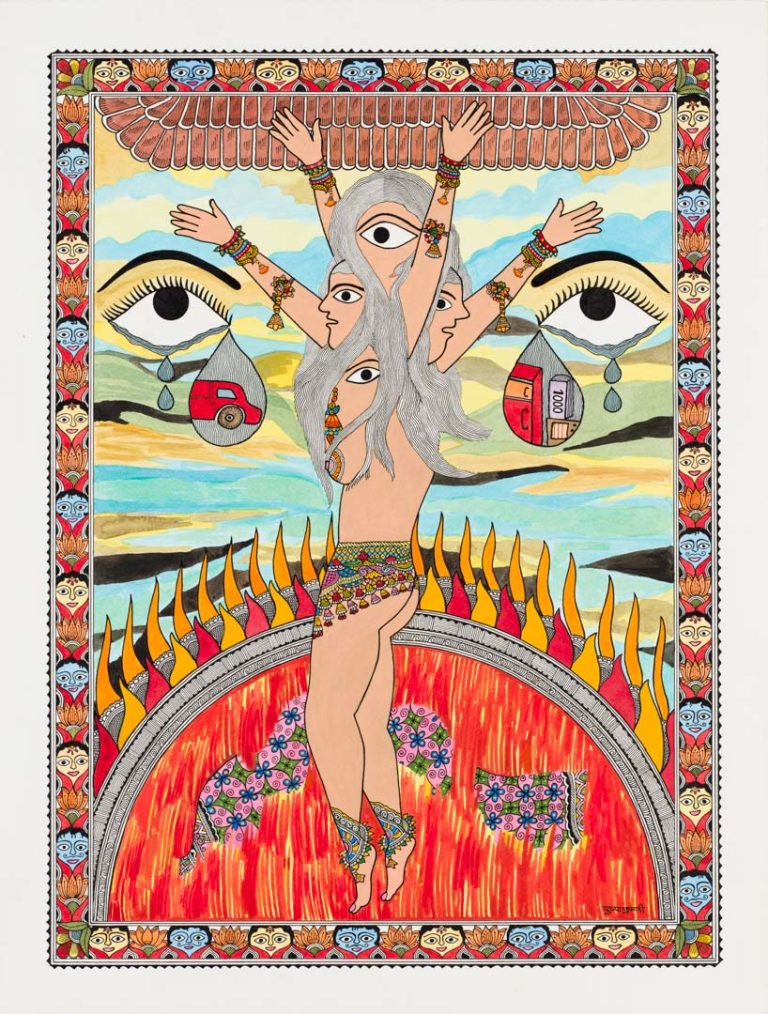We acknowledge the Traditional Owners of the land on which the Queensland Art Gallery | Gallery of Modern Art stands and recognise the creative contribution First Australians make to the art and culture of this country.

Pushpa Kumari / India b.1969 / Dowry 2015 / Ink on acid free paper / 60.1 x 45.7cm / Purchased 2015 with funds from Gina Fairfax through the Queensland Art Gallery | Gallery of Modern Art Foundation / Collection: Queensland Art Gallery | Gallery of Modern Art / © Pushpa Kumari
Pushpa KumariDowry 2015
On Display: Regional Touring Exhibition
Mithila or Madhubani painting still remains an intrinsic part of village life, highly traditional in technique and style, and handed on from mother to daughter. Pushpa Kumari is one of the most experimental Mithila artists practising today. Her grandmother Mahasundari Devi was a well-known artist in this tradition, and Kumari learnt directly from her. As curator Minhazz Majumdar comments:
What makes Pushpa special is that though she is rooted in her centuries old tradition, she has incorporated not only contemporary ideas and treatment, but also, an artistic intensity, an aesthetic ideal that is truly her own, difficult to find in the mass of generic Madhubani paintings being churned out today [for a tourist market].1
Kumari uses intricate, fine line drawing, with a border of repetitive motifs. The works draw on an elaborate symbolism ― for example, fish represent fertility, peacocks are associated with love, and serpents with divinity. Mithila painting is linked with marriage and social ceremonies, with many paintings intended as instructions for newlyweds. Kumari draws on this iconography to address contemporary historical and social issues often relevant to women, such as female infanticide, dowry deaths, and sexuality, as well as stories of love and union from the Ramayana.
Endnotes:
1 Minhazz Majumdar, ‘Transforming Tradition’ [Pushpa Kumari], Raw Vision, no.54, Spring 2006, pp.52―7.
Pushpa Kumari was raised in the village of Madhubani in the Mithila region, close to the border between India and Nepal in the state of Bihar. Dating from at least the fourteenth century, Mithila or Madhubani painting is an art form traditionally practised by women from this region. For several centuries it was used to mark rituals and ceremonies and was created on the walls of homes and certain objects. The Madhubani district is particularly known for its artists, hence the form is often called Madhubani. The works are characterized by intricate line drawing, an underlying symbolism and geometric borders. Kumari’s teacher was her grandmother, Mahasundari Devi, a well-known painter and one of the earliest Mithila artists to transfer their designs to paper and canvas.